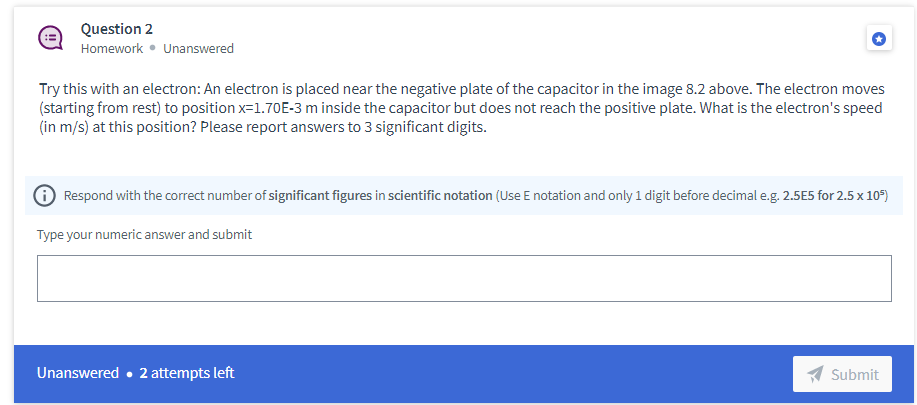An electron is placed very close to the negative plate of a parallel plate capacitor. This electron will accelerate in the electric field produced inside the capacitor. The plates have charge Q=1x10-9C, area of A=5.0x10-4m2, and spacing of d=0.002m. What is the speed of the electron when it reaches the position x=1.70E-3m? Assume the electron starts from rest.
Dielectric Constant Of Water
Water constitutes about 70% of earth. Some important distinguishing properties of water are high molar concentration, small dissociation constant and high dielectric constant.
Electrostatic Potential and Capacitance
An electrostatic force is a force caused by stationary electric charges /fields. The electrostatic force is caused by the transfer of electrons in conducting materials. Coulomb’s law determines the amount of force between two stationary, charged particles. The electric force is the force which acts between two stationary charges. It is also called Coulomb force.
An electron is placed very close to the negative plate of a parallel plate capacitor. This electron will accelerate in the electric field produced inside the capacitor. The plates have charge Q=1x10-9C, area of A=5.0x10-4m2, and spacing of d=0.002m. What is the speed of the electron when it reaches the position x=1.70E-3m? Assume the electron starts from rest.
![Example: A proton is placed very close to the positive plate of a parallel plate capacitor. This
proton will accelerate in the electric field produced inside the capacitor. The plates have charge
Q=1x10 °C, area of A=5.0x104m², and spacing of d=0.002m. What is the speed of the proton as it
slams into the negative plate? Assume the proton starts from rest.
We could solve this problem using the constant acceleration like the last chaptersº, but we can also use
conservation of energy. Illustrated below is the situation when the proton is first placed on the positive
plate:
-1 x 10-ºC
1 × 10-°C
p+
x=0
x=d=0.002m
[8.2]](/v2/_next/image?url=https%3A%2F%2Fcontent.bartleby.com%2Fqna-images%2Fquestion%2F73433fcf-563c-4716-a24e-f166ee722bae%2F51e8db84-680d-4a56-b4e8-396584671704%2Fs5zcyml_processed.png&w=3840&q=75)

Trending now
This is a popular solution!
Step by step
Solved in 3 steps with 3 images









